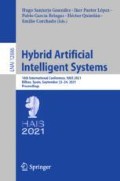Abstract
A new framework for the assessment of Engine Health Monitoring (EHM) data in aircraft is proposed. Traditionally, prognostics and health management systems rely on prior knowledge of the degradation of certain components along with professional expert opinion to predict the Remaining Useful Life (RUL). In order to avoid reliance on this process while still providing an accurate diagnosis, a data-driven approach using a novel recurrent version of a VAE is introduced. The latent space learned by this model, trained with the historical data recorded by the sensors embedded in these engines, is used to visually evaluate the deterioration progress of the engines. High prognostic accuracy in estimating the RUL is achieved by building a simple classifier on top of the learned features of the VAE. The superiority of the proposed method is compared with other popular and state-of-the-art approaches using Rolls Royce Turbofan engine data. The results of this study suggest that the proposed data-driven prognostic and explainable framework offers a new and promising approach.
Partially supported by the Ministry of Economy, Industry and Competitiveness (“Ministerio de Economía, Industria y Competitividad”) of Spain/FEDER under grants TIN2017-84804-R and PID2020-112726-RB.
Access this chapter
Tax calculation will be finalised at checkout
Purchases are for personal use only
References
Ali, J.B., Chebel-Morello, B., Saidi, L., Malinowski, S., Fnaiech, F.: Accurate bearing remaining useful life prediction based on Weibull distribution and artificial neural network. Mech. Syst. Signal Process. 56, 150–172 (2015)
Demšar, J.: Statistical comparisons of classifiers over multiple data sets. J. Mach. Learn. Res. 7(Jan), 1–30 (2006)
Doshi-Velez, F., Kim, B.: Towards a rigorous science of interpretable machine learning. arXiv preprint arXiv:1702.08608 (2017)
Jouin, M., Gouriveau, R., Hissel, D., Péra, M.C., Zerhouni, N.: Degradations analysis and aging modeling for health assessment and prognostics of PEMFC. Reliabil. Eng. Syst. Saf. 148, 78–95 (2016)
Khawaja, T., Vachtsevanos, G., Wu, B.: Reasoning about uncertainty in prognosis: a confidence prediction neural network approach. In: NAFIPS 2005–2005 Annual Meeting of the North American Fuzzy Information Processing Society, pp. 7–12. IEEE (2005)
Khelif, R., Chebel-Morello, B., Malinowski, S., Laajili, E., Fnaiech, F., Zerhouni, N.: Direct remaining useful life estimation based on support vector regression. IEEE Trans. Industr. Electron. 64(3), 2276–2285 (2016)
Li, L., Yan, J., Wang, H., Jin, Y.: Anomaly detection of time series with smoothness-inducing sequential variational auto-encoder. IEEE Trans. Neural Netw. Learn. Syst. 32, 1177–1191 (2020)
Li, X., Ding, Q., Sun, J.Q.: Remaining useful life estimation in prognostics using deep convolution neural networks. Reliabil. Eng. Syst. Saf. 172, 1–11 (2018)
Martínez, A., Sánchez, L., Couso, I.: Engine health monitoring for engine fleets using fuzzy radviz. In: 2013 IEEE International Conference on Fuzzy Systems (FUZZ-IEEE), pp. 1–8. IEEE (2013)
Miao, H., Li, B., Sun, C., Liu, J.: Joint learning of degradation assessment and RUL prediction for aeroengines via dual-task deep LSTM networks. IEEE Trans. Industr. Inf. 15(9), 5023–5032 (2019)
Singh, S.K., Kumar, S., Dwivedi, J.: A novel soft computing method for engine RUL prediction. Multimed. Tools Appl. 78(4), 4065–4087 (2019)
Tian, Z.: An artificial neural network method for remaining useful life prediction of equipment subject to condition monitoring. J. Intell. Manuf. 23(2), 227–237 (2012)
Zhang, A., et al.: Transfer learning with deep recurrent neural networks for remaining useful life estimation. Appl. Sci. 8(12), 2416 (2018)
Zhao, Z., Liang, B., Wang, X., Lu, W.: Remaining useful life prediction of aircraft engine based on degradation pattern learning. Reliabil. Eng. Syst. Saf. 164, 74–83 (2017)
Author information
Authors and Affiliations
Corresponding authors
Editor information
Editors and Affiliations
Rights and permissions
Copyright information
© 2021 Springer Nature Switzerland AG
About this paper
Cite this paper
Costa, N., Sánchez, L. (2021). Remaining Useful Life Estimation Using a Recurrent Variational Autoencoder. In: Sanjurjo González, H., Pastor López, I., García Bringas, P., Quintián, H., Corchado, E. (eds) Hybrid Artificial Intelligent Systems. HAIS 2021. Lecture Notes in Computer Science(), vol 12886. Springer, Cham. https://doi.org/10.1007/978-3-030-86271-8_5
Download citation
DOI: https://doi.org/10.1007/978-3-030-86271-8_5
Published:
Publisher Name: Springer, Cham
Print ISBN: 978-3-030-86270-1
Online ISBN: 978-3-030-86271-8
eBook Packages: Computer ScienceComputer Science (R0)

